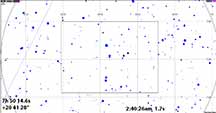
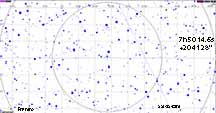
This high rank event passes through Santa Cruz comfortably. The only problem is the time, and right after our Astro 25 field trip. Get a quick sleep after unpacking and get it from home, is my plan.
 |
 |
Karl von Ahnen Pyote Log File
Fog in town, and Kirk and I were too exhausted from a very good Astro 25 trip to try this sleep-killer event right after getting home and unpacking. Karl got it from near his place in the mountains.
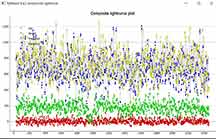 |
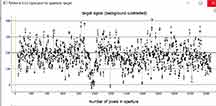 |
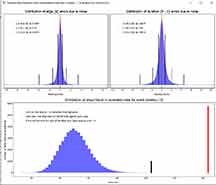 |
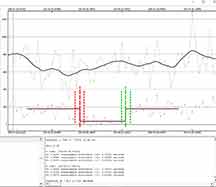 |
This was Karl's first success while using the arduino VTI. So in reducing this, I had to create a new OCR profile, which took about an hour and a half, considering re-learning-curve time. The resulting OCR profile looked perfect to me, but in reducing the tape, It looks like there was about 8 frames that were dropped. My laptop too busy, is my guess, as it seemed slow on other tasks as well. In any case, not sure why the dropped frames. That's very very rare for me. I did a manual time stamp determination, using points inside the large time range that had no dropped frames, and which included the occultation so no damage to the timing determinations of the event.
Karl used 8X Watec setting. His raw tape looked very dark, with the sky pitch black and the stars quite dim. Not sure why. As a test, I used his camera on Oct 5 when we were both at Cabrillo Observatory, on my own recording equipment and the video on-screen looked ~identical to my own. His Watec settings, including gain, were all correct.
I used the contrast adjust and a finder field to position two tracking stars and a 'sky' aperture, and a static aperture for the target. The evident occultation happened exactly on time and correct depth and passed the false-positive test. The first determination gave a duration of 2.3s, but the predicted maximum duration was 1.7s. The tracking star #1 which was very close to the target, had several integrations at the time of the D which looked to be a "seeing" or refraction induced dimming, or some other effect which affected both tracking#1 and the target at the same time, so I re-did the PyOTE analysis using tracking star #1 as reference (smoothed curve shown above, in black) and using a 4 frame smoothing time. The dip in tracking #1 is evident at the D. Then by using the tracking #1 star as reference, the "D" time was clearer, and gave a duration of 1.7s; same as the max predicted and a better agreement.
The altitude was only 13 degrees, deep in the atmosphere. Perhaps this helps explain how faint it was, although I'd expect the sky would be brighter at low altitude.
Report sent to IOTA on Oct 6.